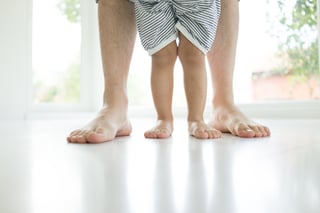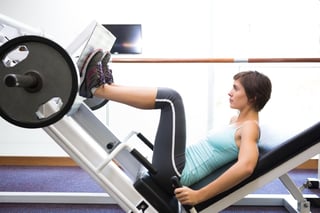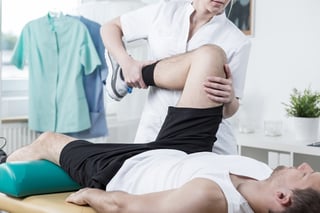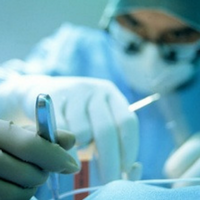Severe Damaging Effects Of Bow Legs With Growing Age

Can bow legs get worse? The answer is yes. Bow legs – medical practitioners use the term genu varum – occur when there is too much space between the knees, leading to legs that are bent outward in the middle. A natural condition in toddlers, bow-leggedness can persist into adulthood and may become worse with time. Heredity, diet, and exercise all play a role in bow-leggedness. Surgery may be necessary in some cases.
Bow Legs and Development
 Babies are born bowlegged because of the cramped conditions in the womb. Once a child begins to walk, which is usually between the ages of 12 to 18 months, the muscles in the legs become stronger and the condition corrects itself. In some cases, however, bow-leggedness persists through the teen years and even into adulthood.
Babies are born bowlegged because of the cramped conditions in the womb. Once a child begins to walk, which is usually between the ages of 12 to 18 months, the muscles in the legs become stronger and the condition corrects itself. In some cases, however, bow-leggedness persists through the teen years and even into adulthood.
Persistent bow-leggedness can be caused by abnormal bone development, fractures that don't heal properly, fluoride or lead poisoning, a condition called Blount's disease and vitamin D deficiency, which causes rickets. However, rickets is an uncommon condition in developed countries like the United States. In this country, persistent bow-leggedness is more likely to be caused by something other than rickets.
Important Factors in Bowleggedness
 Nutrition is important in any musculoskeletal condition and bow legs are no exception. Vitamin D is crucial to healthy bone development. The body will naturally manufacture vitamin D from sunlight or you can take supplements of vitamin D3. You need at least 30 minutes of sun every day for adequate vitamin D manufacture.
Nutrition is important in any musculoskeletal condition and bow legs are no exception. Vitamin D is crucial to healthy bone development. The body will naturally manufacture vitamin D from sunlight or you can take supplements of vitamin D3. You need at least 30 minutes of sun every day for adequate vitamin D manufacture.
Don't wear sunscreen during that 30 minutes, as the idea is to expose the skin to the sun. Calcium and related minerals such as magnesium and phosphorus are also critical for healthy bones and muscle function. Fatty acids – especially omega-3 fatty acids – are the final key to healthy bones. Many of these nutrients can be obtained from full-fat dairy products. Other good sources include high-quality protein such as fatty fish and eggs, and leafy green vegetables.
All About Exercise
 Exercise is another important factor in correcting bow-leggedness. Muscles work in pairs and must be equally strong to work properly and ensure optimum development. If bow-leggedness is persisting past the age of three or four, a good exercise program can help correct any problems. Exercise also promotes strong bones, as weight-bearing is important for normal bone development.
Exercise is another important factor in correcting bow-leggedness. Muscles work in pairs and must be equally strong to work properly and ensure optimum development. If bow-leggedness is persisting past the age of three or four, a good exercise program can help correct any problems. Exercise also promotes strong bones, as weight-bearing is important for normal bone development.
Physical therapists can help develop an exercise program and teach the correct way to perform exercises. Regular aerobic exercise, such as walking or running, also helps promote overall health and strong bones. Exercise also helps prevent obesity, which can worsen bow legs.
Medical Management
 Persistent bow-leggedness is a condition that requires medical management. An orthopedic surgeon can assess the condition and make recommendations for care. In most cases time, nutrition and exercise can help resolve the problem. Braces, casts and special shoes are not recommended in most cases, but some children may benefit from these treatments. Such recommendations are more likely if the child has severe bow-leggedness.
Persistent bow-leggedness is a condition that requires medical management. An orthopedic surgeon can assess the condition and make recommendations for care. In most cases time, nutrition and exercise can help resolve the problem. Braces, casts and special shoes are not recommended in most cases, but some children may benefit from these treatments. Such recommendations are more likely if the child has severe bow-leggedness.
Your child should see the orthopedic doctor about every six months for repeat assessments and to determine whether the problem is improving or getting worse. If the bowlegged condition has not corrected itself by the middle teens, surgery is often an option. Surgery is also an option for adults. Surgery is not usually recommended in younger children because the bones are still growing, which can affect the likelihood of success.
When Surgery is Necessary
 Bow leg correction surgery consists of three steps. The first step is the surgery itself. The procedure is usually performed on an outpatient basis at a hospital or outpatient surgery center. General anesthetic may be used. The surgeon makes a small incision through the skin and surgically cuts the tibia (shinbone). The next stage is correction, in which the leg gradually begins to return to a normal alignment with daily adjustments.
Bow leg correction surgery consists of three steps. The first step is the surgery itself. The procedure is usually performed on an outpatient basis at a hospital or outpatient surgery center. General anesthetic may be used. The surgeon makes a small incision through the skin and surgically cuts the tibia (shinbone). The next stage is correction, in which the leg gradually begins to return to a normal alignment with daily adjustments.
The final stage is consolidation or healing, when new bone is laid down and a growth called callus forms over the incision. Consolidation takes about 1-2 months. Most people are able to be active with crutches throughout the healing phase, which takes about 3 months. Exercise continues to be important during the recovery phase after surgery, as the muscles have typically adjusted to the bowlegs and are uneven. Exercise also promotes circulation and wound healing.
If you've ever wondered can bow legs get worse, now you know. Bow-leggedness can lead to other problems as you get older, including degenerative conditions in the knee and hip joints. It may also cause pain in the knees, hips, or ankles due to poor alignment of the joints. If you have bow legs, contact an orthopedic surgeon.

